
My last post was about what we knew at that time. Since then, there are new updates.
After the attack in the Vienna temple (actually a dera of the Sach Khand group), there are news confirmations that Sant Rama Nand has passed away from his injuries, while the Dera head Niranjan Das is in stable condition.
There are also reports of violence in Punjab. IBN live reports the death of 2 people in the Doaba region and also one should note that it seems that the army has been called in to parts of Punjab.
One person was killed and four others were injured as Army jawans opened fire in Lambra village, 30 kms from Jalandhar. Another person was killed after the police opened fire on protesters at Jalandhar Cantonment railway station. [link]
In some ways I believe that this is a tragedy of the 80s and 90s.
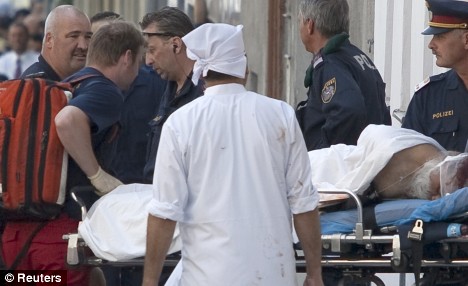 As suggested by our readers (pagh salute: ambi and an indian Sikh), I am posting on the tragedy in Vienna. The facts are still coming in, so we have little perspective on what exactly occurred.
As suggested by our readers (pagh salute: ambi and an indian Sikh), I am posting on the tragedy in Vienna. The facts are still coming in, so we have little perspective on what exactly occurred.
This much is known. In the Austrian capital of Vienna, six Sikh men carrying various weapons and a handgun entered a Dera [Some media are calling this a ‘Sikh temple’ or a ‘gurdwara’, but it seems to be a dera attached to the Sach Khand group]. The men proceeded to go towards the ‘preachers’ of the Dera and in the melee 16 people have been reported injured, including 6 seriously – two names have been reported amongst the injured – Niranjan Das and Sant Rama Nand – and the other 4 were the attackers (there are rumors that Sant Rama Nand may have been killed, but this has not yet been confirmed. Sant Rama Nand is one of the highest leaders of the SachaKhand Dera).
Some of the media is attempting to frame the dispute in terms of caste, asserting that the Dera is set up to honor Bhagat Ravi Das, whose own Bani can be found in the Guru Granth Sahib. Other reports for a cause have provided the following:
[the attackers] accused one or both of the preachers of being disrespectful of the Holy Book [Sri Guru Granth Sahib]. Indian news reports said the attackers were incensed that one of the preachers was given a ceremonial shawl considered a high Sikh honor. [link]
Still some of the local press has provided the following reason:
It was assumed by local media that the conflict between the temples like competing for worshipers might be the reason of this shooting incident. [link]
The story does not end there.
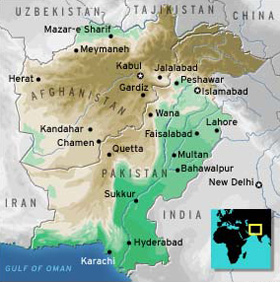 Earlier this month I asked if the Taliban’s rising influence in Pakistan and their removal of Sikhs from the Swat Valley was a harbinger for more extreme religious persecution. This week, two articles caught my eye:
Earlier this month I asked if the Taliban’s rising influence in Pakistan and their removal of Sikhs from the Swat Valley was a harbinger for more extreme religious persecution. This week, two articles caught my eye:
The first depicted multi-religious protests in Kashmir over Pakistan’s inaction in the region. The second implied complicity between the Jawat-ud-dawa (JuD) and the Taliban to use “rescue aid” as a coercive tactic.
The use of “aid” to buy sympathy, garner political favor, or build political support is nothing new, and is described extensively in Machiavelli’s The Prince [source]. Similar concerns were raised in the wake of the Indonesian tsunami, when Muslim communities alleged that Christian aid organizations were forcibly converting orphaned children and the injured by withholding necessary aid. The extent, or veracity, of those allegations was relatively unknown/unquantifiable. Given the Taliban’s extensive campaign-based strategies, in addition to the narrow regional focus of its impact, it should be less difficult to quantify the JuD’s impact.
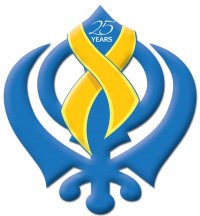 In The Langar Hall, we do our best to keep you up-to-date with the latest 1984 events. From conferences, to concerts, if it’s happening, we’ll post it.
In The Langar Hall, we do our best to keep you up-to-date with the latest 1984 events. From conferences, to concerts, if it’s happening, we’ll post it.
With the 25th commemoration of the Ghallughara, a great initiative called ‘Sukhmani Sahibs for the Sikh Shaheeds‘ (being held the first week of June, 2009) is being coordinated by the Jakara Movement throughout the United States. Starting in California, facebook groups have sprung up in Michigan, and the numbers of people participating are increasing. Texas and Washington DC have added to the list.
From their Facebook page:
The simplest, yet most powerful, thing one can offer another soul is a prayer.
Many of our parents are involved in Sukhmani Sahib groups in their local Gurdwaras. The Sikh Memorial Center is asking these groups, as well as any others that wish to participate, to come together and remember Guru Arjun’s Shahadat and the Memory of the Shaheeds that gave their lives in the third Ghallughara (June 1984). How to we propose this remembrance? We are asking for these groups across the North America to perform Sukhmani Sahib during the first week of June and open the event to their entire local Sangat.
So how can you help? Well if your parents or someone that you know participates within a Sukhmani Sahib group, help us get them on board with this project! This event is not exclusive to parents, if you or your friends would like to put together a Sukhmani Sahib group of your own, contact me.
The coordinators’ task is difficult. For many of us, our mothers are part of these groups and the organizers are calling males at Gurdwaras to get in touch with these groups. If your mother is part of such a group, help the coordinators leap frog the males and send an email to them. At least help out that much. Better is to join your mother in the Sukhmani Sahib. Best of all, start your own group! Get in touch to get the information packet mailed out to you.
AND, if you live near Fremont Gurdwara:
Thematically Sikh paintings are rare. Thus, when I came across the paintings below, I thought I should share. The oil paintings below are the work of Jaswant Singh Zafar. He’s a poet, photographer, and painter in his free time and an engineer in Ludhiana by day. This year, he’s spending his free time creating a series of paintings under the theme of ‘Gurbani.’ The paintings completed thus far weave the mool mantar through various aspects of nature, shapes, and other backgrounds.
At the end of the year, the series will be in an exhibition at the Artmosphere Gallery in Ludhiana. Artmosphere was created to provide a platform for budding artists in Ludhiana and Punjab such as Jaswant Singh Zafar. Such an endeavor cheers me and gives hope that the visual arts scene there is growing.

I appreciate these paintings because they provide some insight into the art scene in Punjab- an example of what’s happening there. More works from this series can be found here.
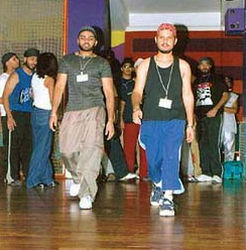 Sometimes (or may be it more often), you read an article that just doesn’t seem to make any sense. My google newsfeeder caught on such article titled: Sikh youth moving away from teachings of Sikhism. The author of the article Harleen Kaur seems to be at all places at once, reporting stories on Chandigarh, Malaysia, Leicester, and New York all on the same day. It does raise eyebrows into the type of reportage it can claim.
Sometimes (or may be it more often), you read an article that just doesn’t seem to make any sense. My google newsfeeder caught on such article titled: Sikh youth moving away from teachings of Sikhism. The author of the article Harleen Kaur seems to be at all places at once, reporting stories on Chandigarh, Malaysia, Leicester, and New York all on the same day. It does raise eyebrows into the type of reportage it can claim.
The story reports:
The young Sikhs seem to be moving away from the teachings of Sikhism largely due to lack of knowledge and faith in their culture and religion.
Hardly anything surprising there. Sikhs have been saying that for years.
The article is trying to promote the Sikh Naujawan Sabha’s Vaisakhi-fest, but some of the analysis seems off, even bordering on the absurd:
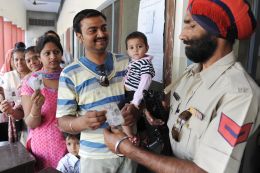 The election results in India seem to be in. The Congress Party has increased its power in the center and even some of the commenters here in The Langar Hall have been jubilant.
The election results in India seem to be in. The Congress Party has increased its power in the center and even some of the commenters here in The Langar Hall have been jubilant.
While the Indian elections have received brief commentary, here and there in The Langar Hall, the results call out for some analysis towards a Sikh perspective.
Overwhelming have been the shouts of “Singh is King” as it seems that Manmohan Singh will continue to keep the Prime Minister position, at least if his victory-speech is any indication, until his political overseers – the Gandhi family – are ready to replace the kursi-warmer with Rahul Gandhi. Others in The Langar Hall have already written critical pieces of this so-called Great Sikh Hype.
News media have rightly commented on the Congress Party’s sweeping electoral victories in Delhi on the party’s dumping of the mass-murderers Jagdish Tytler and Sajjan Kumar (albeit it seems more political maneuvering – with one of the positions filled by Sajjan Kumar’s brother, than any true remorse) and the projection of Manmohan Singh as a way to draw Sikh votes in Delhi away from BJP candidates. As a strategic community, Sikhs in no way should they tether their votes to a single party.
 At the Langar Hall, we’ve covered a number of Sikh candidates’ campaigns for local government office. I just wanted to include a brief update about Ravi Bhalla, who looks poised to become one of Hoboken’s first Sikh city councilmembers as he enters a run-off election next month:
At the Langar Hall, we’ve covered a number of Sikh candidates’ campaigns for local government office. I just wanted to include a brief update about Ravi Bhalla, who looks poised to become one of Hoboken’s first Sikh city councilmembers as he enters a run-off election next month:
While it is clear that Peter Cammarano and Dawn Zimmer will vie for the Hoboken mayoralty on June 9, the provisional ballots may still change the neck-and-neck race to see which of the last three of six council-at-large candidates get into the runoff on that date. […]
As of Tuesday night, it looked like the top six will be as follows:
[1.] Carol Marsh 3,719
[2.] Ravi Bhalla 3,698
[3.] Dave Mello 3,361 [link]
When we last covered this story, Ravi was running as an independent for office. Since then, he joined a “reform” slate and has been campaigning extensively. His success comes as a surprise to some, who don’t understand how a practicing Sikh could get so far…
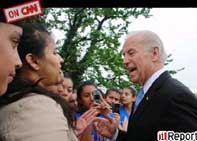
Gurbakhash Kaur Questioning Vice President Joe Biden
One of the major issues affecting the Sikh community is increasing civic engagement in the United States. We often focus on getting more Sikhs to vote and lobby our politicians about the issues affecting our community. This lobbying general pertains to writing letters and signing petitions that ask our community members to move beyond taking pictures with politicians at fundraising events or giving them awards at local melas. This past week, a young Sikh woman, Gurbakhash Kaur, highlighted what it means for a Sikh to be civically engaged. She questioned Vice President Biden “about two Sikhs in the United States Army who were told to cut their hair in order to serve” and Governor Jon Corzine about rising health education costs, while her Sikh peers stood by her side. These handshaking events were not a forum set-up for accountability, but more as photo-ops for the politicians. However, Gurbakhash Kaur was determined to make hand-shaking an opportunity to hold our elected officials accountable to their Sikh constituency.
As a resident of Lodi, New Jersey, she got face-time with Vice President Biden during his visit for a new construction project to widen Main Street and US Route 46. During her questioning, World Sikh News reports that:
Vice President Biden interrupted Kaur to tell her a member of his staff is a Sikh and did not allow her to finish her question. Afterwards, Kaur said, “I want the story to get coverage, as hardly anyone pays attention to our issues . . . we need a lot more legal support and begging and pleading to get our issues addressed.”
Ultimately, Gurbakhash Kaur’s actions are inspiring because she highlights an example of Sikh’s standing up for our rights through self-empowerment. More importantly, she acted through self-organizing rather than taking part in an event organized by other groups to mobilize the Sikh community.
Kuddos to Gurbakhash Kaur for demanding accountability from our elected officials!
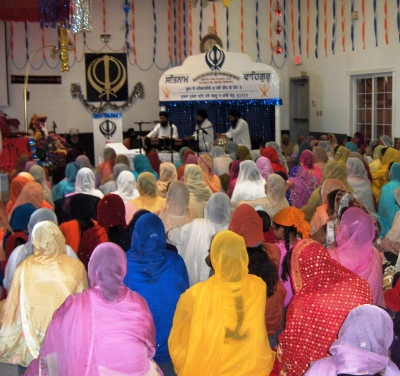 Phulkari’s post a few weeks back got me thinking about Gurdwaras – their origin and the role they play in Sikh society today. History tells us that Guru Nanak Patshah created Dharmshalas in Kartarpur where Sikhs would rise early and meet for Keertan, Veechar, reflection, and Guru-ka-Langar. It was a central element to the ideal society that Kartarpur would become.
Phulkari’s post a few weeks back got me thinking about Gurdwaras – their origin and the role they play in Sikh society today. History tells us that Guru Nanak Patshah created Dharmshalas in Kartarpur where Sikhs would rise early and meet for Keertan, Veechar, reflection, and Guru-ka-Langar. It was a central element to the ideal society that Kartarpur would become.
Over a century ago, Sikhs first arrived in North America – working at lumber mills, railroads, and as migrant laborers. They settled their families and chose to establish Gurdwaras (as early as 1908 in West Vancouver, BC and 1912 in Stockton, CA) to preserve both their spiritual and cultural roots in the land far from their history.
Now with hundreds of thousands of Sikhs in North America and the needs of our communities growing, the Gurdwara has expanded the services it offers far beyond its humble beginnings. Many Gurdwaras have Khalsa schools and libraries. Others plan for fitness centers, basketball courts, and healthcare clinics. One of the local Gurdwaras here hosts an annual Panjabi cultural show and mela, with weekly Giddha and Bhangra practices held at the Gurdwara facility itself. The North American Gurdwara has become not only a spiritual center, but also a community center, serving all the needs of the Sikh and Panjabi population.
On the one hand, I like having a Gurdwara as the center for our community’s activity. Although not all people have an initial interest in Sikhi, all these other events and programs at least keep people coming. And even a short “ritualistic” trip to the Gurdwara could develop in to something more. On the other hand, I can’t help but wonder…are we asking too much from our Gurdwaras?
With such different and competing interests, leaders fight for position so they can make their agenda the focus, and control Gurdwara resources accordingly. This drives much of the political drama and power struggles that surround our Gurdwaras today. As a result, many programs (such as Khalsa schools) end up mismanaged, poorly resourced, and inefficient.
Secondly, with all the programs our Gurdwaras offer, I question – are we taking away from the primary purpose of the Gurdwara…learning Gurmat (the Guru’s way)? How well do our Gurdwaras focus on Simran and Veechar? How well do our Gurdwaras connect the youth with the Guru’s message? What about services for non-Panjabi speakers or introducing non-Sikhs to our faith? What about programs emphasizing Sikh culture – like Gatka or Gurmat Sangeet? Are our Gurdwaras really institutions for learning? If the answer is less than perfect, shouldn’t we re-prioritize and change the focus of our Gurdwaras?
Many Gurdwaras serve small communities in rural areas where limited resources force the Gurdwara to serve multiple purposes. However, in larger communities, where resources are plenty – should we consider separating out our organizations? Maybe create separate Punjabi societies, Khalsa schools, clinics, and even Sikh community centers that focuses on outreach, youth counseling, and seva projects?
Perhaps under separate structures and management, these organizations will be able to thrive and meet their goals more efficiently with less resistance. And with our community’s growing needs, why not grow our presence with more diverse organizations?
Thoughts?
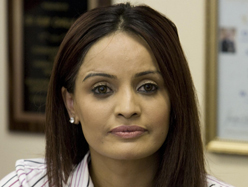 For those that follow The Langar Hall, Ruby Dhalla is no stranger to our coverage on Canadian politics. Whether it be on our list of Sikh MPs throughout the world, a Sikh Barack Obama, a horrible beating that is symptomatic of the nightmare that is the Punjab Police, or even attendance at NRI Punjabi conference, she has found mention.
For those that follow The Langar Hall, Ruby Dhalla is no stranger to our coverage on Canadian politics. Whether it be on our list of Sikh MPs throughout the world, a Sikh Barack Obama, a horrible beating that is symptomatic of the nightmare that is the Punjab Police, or even attendance at NRI Punjabi conference, she has found mention.
In this post, she becomes the focus. Since last week after the Star published a story, Ruby Dhalla, the Liberal Member of Parliament, representing Brampton-Springdale, has been on the receiving end of a flood of media criticism for the following allegations
[Immigrant home care-givers] claimed that they earned $250 a week working 12- to 16-hour days at the Dhalla family home, that Dhalla herself had seized their passports and that other family members made them wash cars, shovel snow and clean chiropractic clinics owned by the family. [link]
The Canadian press has had a field day and has likened the case to the controversy that led to Eliot Spitzer’s resignation as the governor of New York due to his relationship with a prostitute after being seen as a ‘moralizer.’ Ruby Dhalla has been known to champion immigrant rights issues and women and thus it is for this reason that the allegations have been such damning.
The crisis of Sikh identity was once described to me in very simple terms; most Sikh males no longer want to look like Sardars and most Sikh girls don’t want to marry Sardars. In fact, I distinctly remember several Sikh guys that I went to school cutting their hair for the simple reason of “getting girls”.
Over the past few years, we’ve seen efforts on many fronts to confront this trend, including beauty pageants (Mr. Singh International), Sikh models (Sunny Singh Caberwal of Kenneth Cole and now GQ fame). Now, in a twist on the standard Sikh dharmak or religious song, Taranmpreet has released a track called “Teri Meri Bas: Sat Sri Akal”.

Last year I commented on the UK government spending over £100,000 to (unsuccessfully) figure out how to create appropriate gear for Sikhs recruited into their anti-terror corps. It also wasted a lot of time for a Sikh officer who had been recruited to serve in the corps and then kept in limbo without assignment for over a year.
Well, someone somewhere got the memo. The still new BSPA is working with scientists to design and provide a Kevlar turban for its 2,000+ Sikh police officers, explaining that currently there is no other safe and religiously-appropriate option. The failure to provide this gear directly impacts the employment options and pathways of British Sikhs who serve as police:
Sikh officers have been prohibited from becoming firearms officers because our religion does not allow us to remove the turban…
There has been some research done into producing a ballistic material for turbans and we would like to follow any opportunity where we could manufacture a ballistic product – made out of something like Kevlar – that would ensure a certain degree of protection so Sikh police officers could take part in these roles.
If these turbans are actually useable and wearable, they could open professional options for Sikhs across a swathe of high risk “law and order” positions (and no doubt, the military). On the other hand, a Kevlar turban sounds terribly uncomfortable, and also seems like a somewhat strange alteration of the turban itself. Maybe I am having a hard time wrapping my head around the concept, but I’m not entirely sure how a Kevlar turban could be designed to be both religiously appropriate and, well, a solid hunk of material.
![]() In all honesty, I have grown tired of bhangra. Gone are my days of competing; gone are my days of organizing; gone are my days of even caring.
In all honesty, I have grown tired of bhangra. Gone are my days of competing; gone are my days of organizing; gone are my days of even caring.
Still sometimes there are things that are newsworthy and call for praise and attention. This is one such story.
The Pioneer Bhangra competition, hosted by CSU East Bay’s Associated Students Association, had originally scheduled their competition at Chabot College Performing Arts Center in Hayward on June 6, 2009. The date should immediately ring alarm bells. It was to fall on the day of the 25th year of commemoration of Operation Bluestar (the Third Sikh Ghallughara) in 1984.
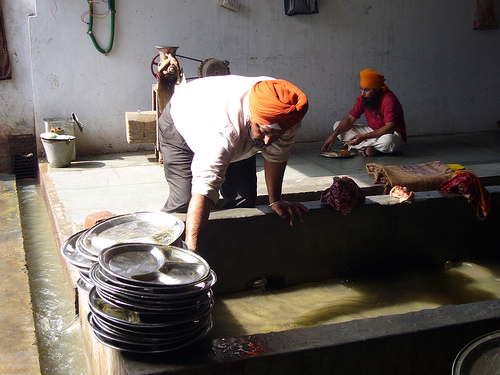 On TLH we have discussed Green Gurdwaras. Part of this green initiative is to use steel plates (i.e. thaals) and cutlery instead of the common paperware. A couple of weeks ago at a local Gurdwara langar, I saw steel plates being used that had been stored away in cupboards for years. Every week disposable cups, plates, spoons and forks were used by the sangat. Somehow in a community with a growing immigrant Punjabi population disposable means modernity. I remember watching sangat members come stand in the standard langar line and show surprise as they reached the front and saw large piles of steel plates. The reactions were amazing. We had aunties with twitched noses who continued to scrub the steel plates although they had been cleaned and washed the night before and showed no signs of being dirty. Uncles made comments like, “hun taan aapaan Punjab ton nikal gaye, a hun desi kamm ithhe vi shuru kar taa”. Others just smirked and laughed.
On TLH we have discussed Green Gurdwaras. Part of this green initiative is to use steel plates (i.e. thaals) and cutlery instead of the common paperware. A couple of weeks ago at a local Gurdwara langar, I saw steel plates being used that had been stored away in cupboards for years. Every week disposable cups, plates, spoons and forks were used by the sangat. Somehow in a community with a growing immigrant Punjabi population disposable means modernity. I remember watching sangat members come stand in the standard langar line and show surprise as they reached the front and saw large piles of steel plates. The reactions were amazing. We had aunties with twitched noses who continued to scrub the steel plates although they had been cleaned and washed the night before and showed no signs of being dirty. Uncles made comments like, “hun taan aapaan Punjab ton nikal gaye, a hun desi kamm ithhe vi shuru kar taa”. Others just smirked and laughed.
There were also positive reactions where aunties and uncles supported the langar sevadars for reintroducing steel plates. These sangat members felt that these plates helped reduce waste while encouraging the action of seva. Interestingly, they said more seva is done by cleaning jutha plates than by just throwing them away. By cleaning jutha plates, it reinforced a sense of humility of cleaning other peoples’ waste. In addition, some people showed a lot of humility by refusing to allow the sevadars to take and wash their plates. For example, an elderly woman, who had difficulty walking, slowly took her plate inside the kitchen and washed it herself. Lastly, a number of sevadars, aside from the family doing langar seva that week, decided to help clean plates. An assembly line of cleaners and dryers was set-up. Some spoke and others just quietly felt the spirit of doing seva together. Ultimately, by reintroducing steel plates the spirit of seva was rekindled in a new way.
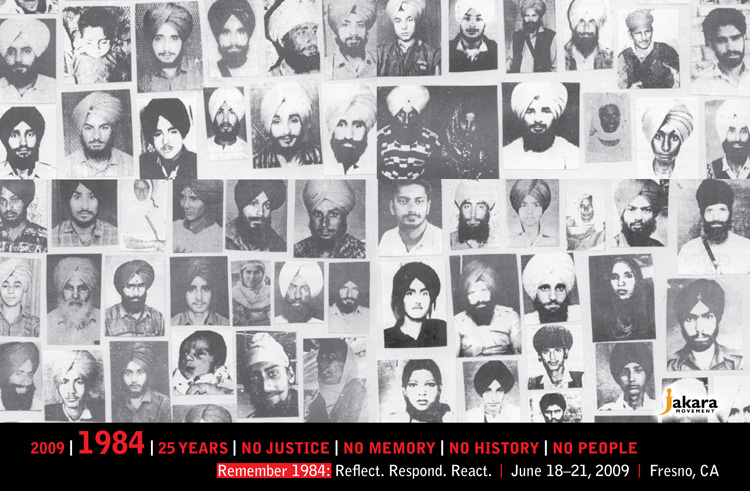
The topic of 1984 is hardly new in The Langar Hall and despite protestations from some amnesia-desiring commenters, we will not forget the Shaheeds of Darbar Sahib, the pograms in Delhi, the Ghallughara against the Sikhs from 1978-1995, or even the continuing impunity that continues today.
We have highlighted many events in the past and we will contine to do so.
In that spirit, I strongly urge TLH readers to attend this year’s Jakara Movement conference in Fresno, CA from June 18-21st. A number of invited guests’ names will be announced in the upcoming week. The title of the conference is “Remember 1984: reflect. respond. react.”
2009 | 1984 | 25 years | No justice | No memory | No history | No people
Despite the fact that many wish to forget the events that befell and have shaped the Sikh Nation, it is vital for the ‘next generation of Sikhs’ to be aware of our past and understand how it shapes our present and our future. While twenty-five years have passed since the attack on our sacred home, much has changed and much has remained the same. For the Nishan Sahib of our Nation to remain tall, it is for us to study our history, remember the past, and continue the fight for justice.
This year at Jakara, we will Remember 1984 and celebrate those Kaurs and Singhs that made the ultimate sacrifice for our Qaum.
Join us in Fresno as we Remember 1984: Reflect. Respond. React.
Register here TODAY and avoid a late fee. Below the fold you’ll find the agenda. See you there!
Gatka owes its early development to the Shaster Vidiya, literally meaning knowledge of the arms. This was a warrior curriculum used by the Sikhs for military training. [link]
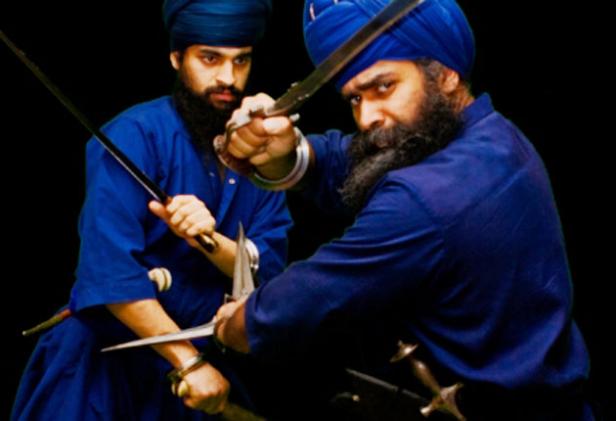 A fascinating article in a UK newspaper highlights the return of Shaster Vidiya – the “world’s original martial art” which was banned by the Raj after the final defeat of the Sikh empire in the mid-19th century. Considered a forgotten art form, Shastar Vidiya was practiced in North India before the emergence of Sikhism. However, it was the Sikhs who were known to have fully mastered this particular fighting style.
A fascinating article in a UK newspaper highlights the return of Shaster Vidiya – the “world’s original martial art” which was banned by the Raj after the final defeat of the Sikh empire in the mid-19th century. Considered a forgotten art form, Shastar Vidiya was practiced in North India before the emergence of Sikhism. However, it was the Sikhs who were known to have fully mastered this particular fighting style.
Now, it seems, young British Sikhs are attempting to revive this lost art form. Their teacher, a controversial figure named Nidar Singh Nihang, has been studying the art of Shastar Vidiya for the past 20 years in hopes of passing it onto the younger generation. Students begin learning how to fight with simple wooden sticks. However, those who show a particular skill and dedication are allowed to practice with the kind of swords that once made the Sikh armies so powerful. The article points out the irony of a British Sikh trying to resurrect shastar vidiya given the history,
 Months ago, my fellow langa(w)r-iter asked a question “On Whose Watch?” when Russian tanks retaliated against Georgian incursions. However, and almost all of us here at TLH, I believe, fall into the trap of having an American filter in terms of the news we discuss and don’t discuss have certainly left out a human rights travesty much closer to South Asia – that of Sri Lanka.
Months ago, my fellow langa(w)r-iter asked a question “On Whose Watch?” when Russian tanks retaliated against Georgian incursions. However, and almost all of us here at TLH, I believe, fall into the trap of having an American filter in terms of the news we discuss and don’t discuss have certainly left out a human rights travesty much closer to South Asia – that of Sri Lanka.
Another Sikh writer, Amardeep of Sepiamutiny, recently wrote about the ongoing humanitarian crisis, but as most in the media, in his subsequent comments, takes a statist approach. I believe that many Sikhs, from their own perspectives on state-violence against non-state actors, take a more even-handed view.
The humanitarian crisis is on epic proportions. A recent article by Gareth Evans, president of the International Crisis Group, writes:
As the Sri Lankan army continues its assault on what is left of the separatist Liberation Tigers of Tamil Eelam (LTTE), tens of thousands of civilians remain trapped inside a shrinking conflict zone, at risk not only from the fighting but from starvation and lack of water and medical attention. Despite the government’s April 27 announcement that the military had been ordered to cease using air attacks, artillery, and other heavy weapons against remaining LTTE-held areas, such attacks have carried on with increased intensity.
The trapped civilians are not the only ones at risk. More than 170,000 who have managed to escape the worst of the fighting remain imprisoned in desperately overcrowded camps and medical centers. Scores are reported to have died after fleeing the conflict zone, and the military has been overwhelmed by the number of civilians flooding into reception areas.
Regardless of one’s opinion of the LTTE and their horrific tactics, I would hardly condone a terrorist state, whose own violence and discriminatory practices led many Tamils into the arms of Prabhakaran and others of the LTTE. The LTTE does/did represent the voice of many Tamils.
Many of you will fondly remember Rohanpreet’s performance on Zee TV last year. In similar news, here is Rashpal Kaur – a young girl from Chandigarh – who recently performed Gatka on Zee TVs Dance India Dance. The judges were not only taken aback by her performance, but also by the adversity she had experienced. Rashpal discovered that she had a life threatening brain tumor when she was pregnant. The treatment she received took away her vision but she was able to deliver a healthy baby boy.
“I only wished that I could see my son once. I just ask God to lend me my eye sight back for just for three hours so that I can see my child just once,” Rashpal said. But this is one wish that has never got fulfilled for Rashpal. [link]
As an ancient martial art, Gatka is considered a spiritual as well as physical exercise. I was impressed with what Gatka meant to Rashpal,
I’m thankful to Dance India Dance for helping me to reach out to so many people. The citizens have shown so much concern and care for me. Before I die I want to do something for my guru Kuljeet-ji and his martial arts school where he teaches young girls about self defense. In today’s times when women are being molested and victimized every other day, I want all the women to learn this martial art form to defend themselves and their dignity.” [link]
It’s an inspiring example of how one can turn pain into something much more powerful. You can view Rashpal’s performance after the jump.
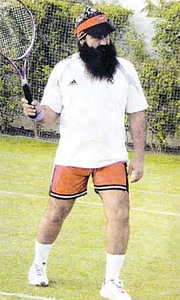 Next month marks the two year anniversary since the Shahadat of Bhai Kamaljit Singh. It has been quite some time since I last blogged about Dehra Sacha Sauda and unfortunately maybe I am also guilty of only following the story as the Indian media does or does not.
Next month marks the two year anniversary since the Shahadat of Bhai Kamaljit Singh. It has been quite some time since I last blogged about Dehra Sacha Sauda and unfortunately maybe I am also guilty of only following the story as the Indian media does or does not.
It was at the end of 2007, when this blog was first starting out, when I wrote about the ‘Sikh Successes of 2007’ with the incident of the confrontation of Dehra Sacha Sauda as #1 on my list. This week, I read an interesting synthesis by two French graduate students – Lionel Baixas et Charlène Simon. Lionel is completing his PhD in political science and is interested in democracy in South Asia, while Charlène is finishing her PhD in anthropology and has worked on issues related to the Ravidassia religious movement.
While I have commented on some of these issues, their recent article, titled “From Protesters to Martyrs: How to Become a ‘True’ Sikh” re-evaluates the Dehra Sacha Sauda issue through interviews and fieldwork conducted last April in Punjab and Haryana. Their abstract is as follows:
This article studies the protest which started in Punjab in May 2007 following a ceremony performed by Baba Gurmeet Ram Raheem Singh (GRRS), head of Dera Sacha Sauda, which was considered as blasphemous by a section of the Sikh community. The aim of this article is to understand the motivation of the actors of the protest itself: How did the Sikh protesters legitimate their reaction one year later? What kinds of reasons have led hundreds of Sikhs from very different social background to take the streets? What kind of emotions played a role in the Sikhs’ mobilization?
